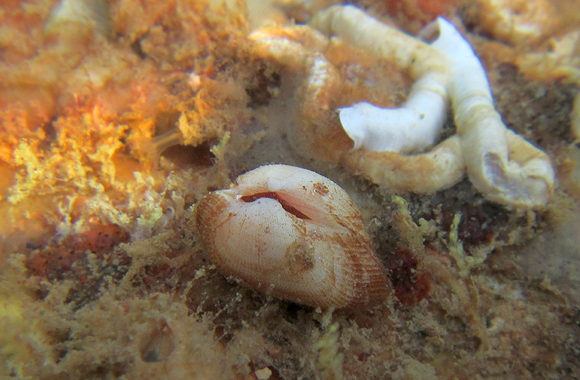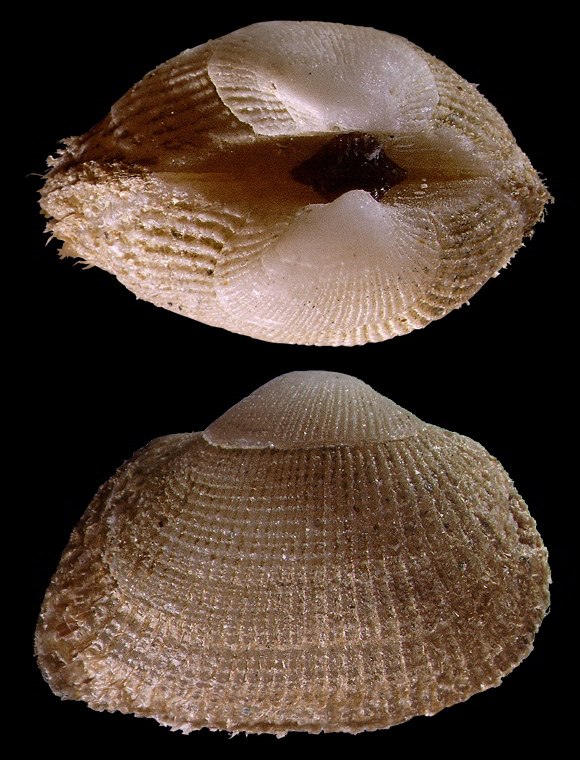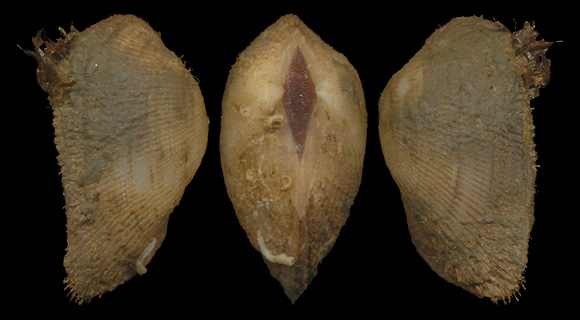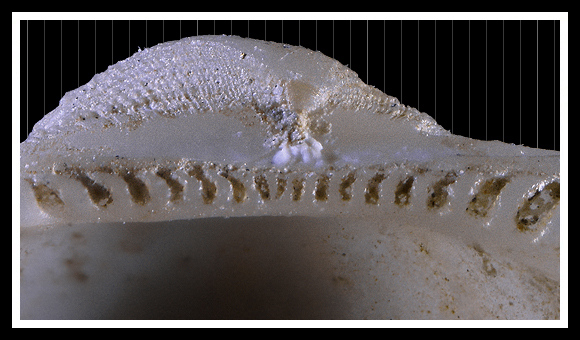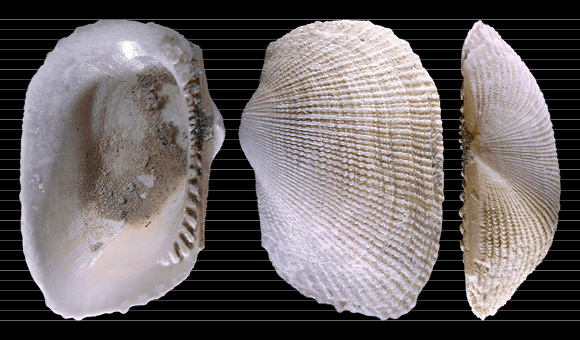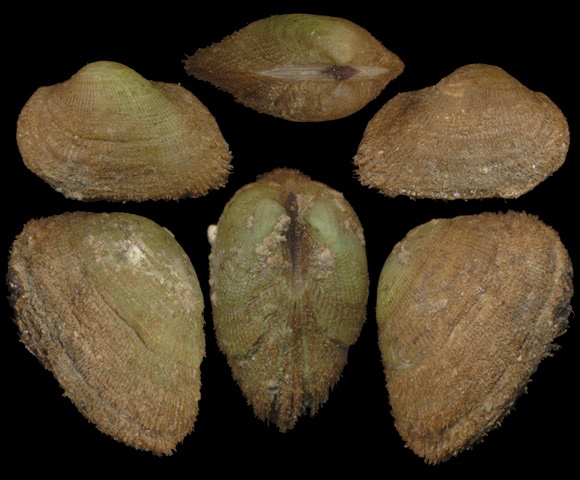
Eastern Irish Sea and English Channel to Mauritania, Cabo Verde, Canarias, Azores and Lusitanian seamounts to Black Sea. Anchored under stones by a kind of byssus, from intertidal grounds to shelf depths. Original taxon: Arca lactea.
8m deep, on sediments, Vouliagmeni marine lake, west of Perachora, Loutraki area, N. Korinthia, Greece. 9-12mm.
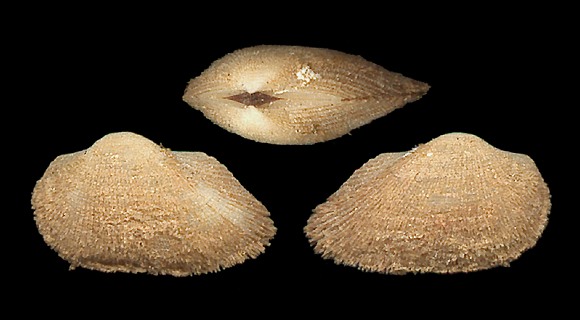
« Shell to 20mm in length. Equivalve, moderately inflated. Inequilateral, beaks in front of the midline, marginally opisthogyre. Outline subquadrate, longer than high, not or sligtly expanded posteriorly. Posterior area demarcated by distinct posterior angle, carinate in juveniles, soon becoming rounded; posterior margin obliquely truncate to slightly curved. Median area slightly sulcate in juveniles, soon not apparent; ventral margin gently curving or straight, rarely indented at short, narrow byssal gape. Anterior margin broadly rounded. Dorsal margin long, straight. Dorsal area becoming wide, umbos becoming widely separated. Ligament amphidetic expanding symmetrically to cover most of dorsal area in older specimens. » – Oliver & von Cosel: “Taxonomy of Tropical West African Bivalves. V. Noetiidae”, Bulletin du muséum national d’histoire naturelle ser.4 vol.XIV, Paris 1992, p.668.
A slender specimen with a complete periostracum.
1-2m deep, under rock, Málaga, Andalucia, S. Spain. 12mm.
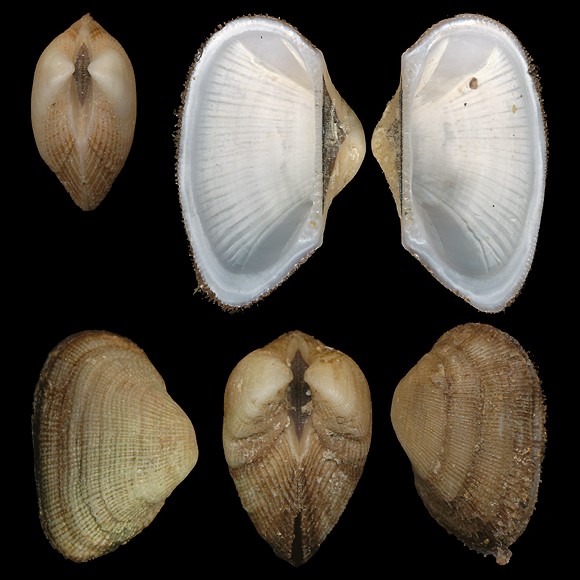
« Hinge plate narrow; teeth in two series but gap barely discernable, numbering up to 35 in total. Teeth straight, vertical medially, slightly angled laterally. Sculpture of numerous radial riblets, these developing interspace riblets over the anteromedian and anterior areas. Anterior riblets narrow with equally sized interspaces contrasting with the postero-median riblets which are more closely spaced; posterior riblets widely spaced, narrow but becoming higher and more irregular than other riblets. All median and anterior riblets nodulose, these taking the form of stepped beads; posterior riblets more irregularly nodulose. Periostracum straw coloured of bristles arising from the riblets on the posterior angle, finer bristles elsewhere and overall with lamellar periostracum in the interspaces. Shell white. Inner margin finely crenulate except for stronger teeth on posterior margin and almost absence of serrations at byssal gape. Adductor muscle scars subequal, both with myophoric ridges. Byssus/posterior pedal retractor scar narrow, elongate, situated below the posterior end of the hinge plate. » – Ibid.
Synonyms: crinita, lactanea, reticulata, striata etc.
In beach drift, Cap d’Agde, S. France. 10-15mm.
